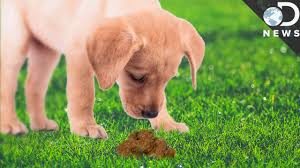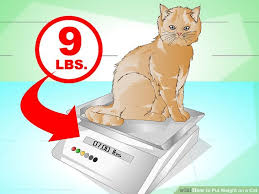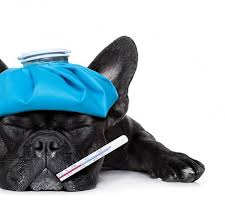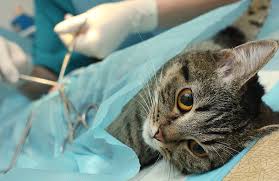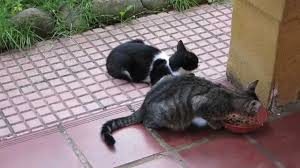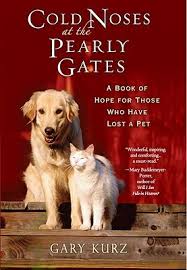 The following article was provided by author Gary Kurz. Gary is the author of many inspiring books about our beloved pets. I reached out to Gary after reading his book “Wagging Tails in Heaven” following the passing of my cat Molly. I will be publishing future articles by Mr. Kurz in future postings. Enjoy this very informative article.
The following article was provided by author Gary Kurz. Gary is the author of many inspiring books about our beloved pets. I reached out to Gary after reading his book “Wagging Tails in Heaven” following the passing of my cat Molly. I will be publishing future articles by Mr. Kurz in future postings. Enjoy this very informative article.
Don’t let the title fool you. This is not an article about your pet getting old. The title is just a “hook” to encourage you to read on. Hopefully, when you do, you will find this a very informative article relating to your pet’s health, or at least your understanding of some aspects of it.
I actually want to talk to you about grass. That’s right, grass; not marijuana, not pakalolo, not Maui wowie, but regular lawn grass. More specifically, I want to talk to you about the importance of grass to our cats and dogs; why they eat it and need it.
I think we would be hard-pressed to find anyone who has not witnessed this peculiarity of domestic animals to munch on turf at one time or another. It is a common occurrence. When it is our pet, however, it can cause concern, because we feel this signals that something is wrong with them. And, if we let our imaginations go unchecked, it can cause us great alarm.
It has been my experience that on occasion, that alarm can lead to unnecessary expense as we panic and rush our best friend off to the nearest veterinarian, only to hear him/her tell us with a chuckle “She’s okay, it’s normal for her to eat grass.”
While that satisfies our immediate concern, it does nothing to help us understand why it is normal. Why do they do it? Are they not getting the right nourishment? Are we not giving them the right food? Do they need vitamin supplements? These are all unsettling, but reasonable questions.
More unsettling is that invariably shortly after ingesting the grass, perhaps 20 minutes later, they regurgitate it back up in a kind of green gooey mess (sorry to be so graphic). Why would they do this? Why would they do something that appears to be so hard on their system, or maybe even harmful to them? Should I be alarmed? Should I go back to the veterinarian? Maybe he/she didn’t understand that they vomit the grass back up?
The short answer is “No, don’t panic.” The long or more detailed answer is that the outdoors is an animal’s natural world and grass is part of that world. And there are many reasons grass is important to them and their health.
One reason, that really has nothing to do with their health is what local lawns mean to your pet. It helps them “know.” You and I can turn on the radio or television and be kept up to date on what is happening in our world. For dogs and cats, the ground is their primary source of connection with their world. The ground is like a giant newspaper or news program for them
They interpret the “droppings”, the odors and conditions to discover what other dogs have been visiting their turf and what they did there. They “read” the yard to know what is happening in the world outside the house. With their heightened senses, they perceive when another dog or cat has been on their turf, what type and size of animal it was, whether it was male or female, in heat or on the prowl and a host of other information they consider important to know.
And the role the ground plays in our pet’s lives does not end at bringing them the news. Through their own “contributions“, they communicate to future visitors of that site who the yard belongs to, who they are and what they are about. Sometimes the deposit is meant as a welcome, other times a warning. It just depends on what the news is for that day and how they feel led to react to it.
But in keeping with the primary theme of this article, the ground is also the local canine and feline drug store. Perhaps it could more accurately be called the local natural herb store.
I don’t know how many times I have heard someone ignorantly say “Look at that stupid dog eating grass“. The truth is, they are not stupid at all, but are rather quite savvy natural pharmacists. I think most people would be surprised to learn that animals know a whole lot more about certain herbs and grasses than we do. I concede it may be more of an instinctive knowledge than cognitive understanding, but it is knowledge nonetheless.
In fact, their understanding of herbal remedies is awesome. Have you ever noticed that they don’t eat just any grass…they sniff around until they find exactly what they are looking for? Like the aisles in a drug store, each section of the outdoors holds different remedies.
For instance, certain grasses and sprouts are sought out and taken as internal cleansers. They cause vomiting; something we have all witnessed. This vomiting is the result your pet expected when they ingested that particular grass. They know when they eat it that it will cause this reaction, yet they do it willingly and with purpose, knowing instinctively that it will cleanse their body of bile and other items that they have found indigestible.
Anyone who loves and keeps animals knows that there are a lot of items that qualify in this category; shoes, shoe laces, yarn, hair and a host of other extraordinary items you would never guess a dog or cat could consume. So, while it is unsettling to know that they are not smart enough to figure out that swallowing string is not a good thing, it is comforting that they are usually savvy enough to know how to extricate it from their system before it becomes a problem or threat. This only emphasizes the importance of their having access to the outdoors on a regular basis.
Continuing, there is more to their natural pharmacy than just cleansers. Other grasses and herbs help evict or terminate worms and other parasites in their system. Still others provide needed minerals and nutrients and enhance digestive enzymes and acids. Uncannily, they all seem to know what remedy is needed for exactly whatever ails them at the moment. The hope is that what they need is available in their limited area of freedom.
Then, perhaps the biggest benefit to them is the presence of chlorophyll in most grasses. Chlorophyll helps to fight infection, enrich the coat and even relieves pain such as joint aches. It can also enhance cartilage soundness and offers a host of other benefits.
It really isn’t that complicated; animals appear to know more about these things than you and I do and certainly more than we would think they should know. I am not sure how they know, but it is enough to accept that they do.
Acknowledging this instinctive savvy in animals, modern medicine has actually taken a step backwards to develop more primitive remedies. Science is now recognizing that many of the grass roots (pardon the pun) remedies nature provides for our pets are as good as, if not better than synthetic drugs.
In fact, people are learning how to cultivate and produce certain herbs and grasses to help their pets, even freezing summer crops for winter dispensing when grasses are not in season. This can be especially helpful to cats and other mammals who are not allowed to venture outdoors, but who still need to ingest some of the natural cleansing agents found there.
Next time you see your pet eating grass, don’t worry about it. They are doing something to help their health. Just give them time to allow the process to culminate before you let them back in on your carpet.
Remember, your pets count!
Keeping a little music on for your pet can help with boredom. Make that music great oldies—they will also make you feel good as well.
Edgewater Gold Radio plays the best variety of oldies and standards! Listen from our website: edgewatergoldradio.com
